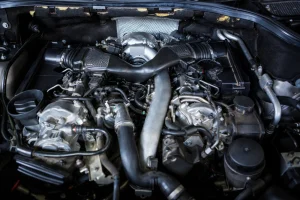The Horton fan clutch has a significant role to play in a truck’s performance, yet it is a standout amongst the most neglected and least looked after parts. Here is a note on how the Horton fan clutch functions, what support it requires and critically what to watch out for.

A Horton fan clutch’s prime role is to draw in and separate the engine fan with a clutch constrained by an air-actuated solenoid valve. On present day vehicles the solenoid gets signals to switch on and off from the engine’s ECU. On more trucks that are older, the signs are sent from the temperature sensor.
The clutch draws in and makes the fan turn when the valve opens, releasing air pressure to move over a spring and push the Piston Friction Disk (PFD) against the rubbing material. It separates when the valve closes, enabling the clutch solenoid to debilitate air and let the spring return.
Most vehicles likewise have a manual override switch which will enable the driver to turn on the fan on the way to go up a slope to cut the engine temperature down. On the other hand, going down on a slope an expert driver will physically turn on the fan, on the grounds that the fan uses up 30 to 40 horsepower.
How does the Horton Fan Clutch work?
In case of fan clutch slippage, heat develops at the external edge of the Piston Friction Disk (PFD). This warmth works its way toward the focal point of the fan clutch. When the heat increases to harming levels and go to the System Sentry the wire will get melted. This permits air pressure in the fan clutch to drop, withdrawing the fan clutch right away.
At the point when the System Sentry has discharged the fan clutch, it has done this to ensure the system. This defensive activity likewise alarms you that there is an issue, so you can investigate and fix the issue right away. Getting issues in the as early as possible will make it easier to fix.
Fan Blades
Fan blades ought to be checked for clearance to the radiator, cover and engine segments. Check, find and expel whatever might be an impediment to the fan blade. Watch that there are no breaks or parts in the fan blades that may make the fan loose balance.
Clutch Slippage
A fan clutch needs 100 psi (6.8 bar) for strong commitment. Search for an issue that is causing halfway commitment – more often than not air spilling past the solenoid valve seals into the carrier causing a weight increase. Is there a weight drop causing incomplete separation? This generally is brought about by a defective solenoid, up-stream air leakage, air leakage from the fan clutch body itself or low air pressure.
Up-keep
Routine maintenance of the Horton Fan Clutch ought to be carried out at 200,000km interims. Evacuate and plug airlines at the Fan Clutch input. Relax fan belts, pivot the pulley and feel for smooth turn of bearings. Check this on all sections of the fan clutch and you should be good to go.






